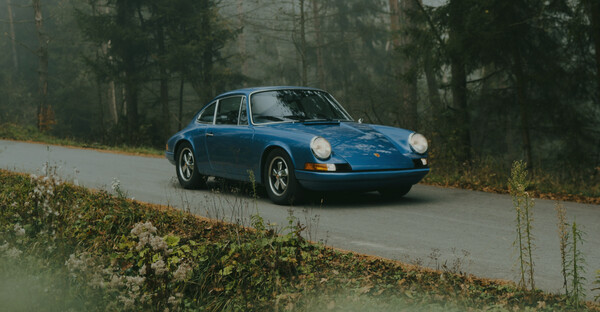Description
From the late 1940s until the MG factory at Abingdon closed in 1980, it was the huge American demand for British sports cars that brought sufficient orders to keep the production lines in business. While other countries around the world and the home market were important, none was as important as North America. The modern-looking, streamlined MGA was introduced in 1955 and this too proved to be a sales success in MG's most important market. Of a total production of 101, 081 MGAs, 81, 401 were exported to the USA, some eighty-one per cent of the total market.
Owing to the importance of this market, it was not surprising that BMC was keen to support any efforts MG might make to promote their products in America. One route was through record breaking attempts such as the supercharged MG Twin Cam EX181 which Stirling Moss and Phil Hill drove in 1957/ 9, setting world class records. The other was through sports car racing. Perhaps the most important circuit for MG in the post-war period in the USA, and also a major fixture on the international racing calendar, were the races held on an airfield circuit near Sebring in Florida.
These were established in 1950 by former Briggs Cunningham team manager, Alec Ulmann, who decided to mimic the French 24 Hour Le Mans concept by running endurance races for production sports cars. From the first six hour race in 1950, MGs figured well in both overall and class results. From 1951 the race was lengthened to 12 hours and was particularly gruelling owing to the bumpy nature of the circuit. In that year an MG special placed fourth overall and TDs won the team prize. By 1956 the MGA had arrived and three north American MG importers entered standard cars with aero-screens and straight-through exhaust systems, finishing a credible fourth, fifth and sixth in class. The following year they were more successful, taking the team prize and gaining first and second in class.
In 1958 the higher performance Twin Cam had been announced, but there were no officially-supported MG entries that year. In 1959 the competition department at Abingdon became serious and prepared three Twin Cam coupes to race and shipped over a mass of spare parts and a fourth practice car. Entered through the MG concessionaires, The Hambro Corporation, all three cars finished in a very wet race including a second and third place result in the 1, 300cc to 1, 600cc class. A class win at Le Mans also added to the momentum so in 1960 Abingdon once again prepared the factory team, this year with many more modifications. For racing the three cars got bigger SU-carburetors, a close-ratio four-speed gearbox, locked differentials, bigger fuel-tanks, a modified cold-air inlet system and additional oil coolers. The bumpers were deleted, lightweight alloy-hardtops from Vanden Plas, and a special cockpit tonneau panel to accommodate a hypothetical traveling suitcase (a new FIA requirement for 1960). two additional spotlights, while the whole car got a typical painting in British Racing Green with different stripes per car to distinguish them on the track.
The three race entries were registered UMO 96, 93 and 95.
This car, UMO 93, scored fourth place with US drivers Jim Parkinson and Jack Flaherty at the wheel behind its sister car YD2/ 2575 with start number 39 and Canadian drivers O. D. Leavens and Fred Hayes driving it. After the race Sebring based BMC dealer Ship & Shore Motors sold the car to collector and racing driver Dr Paul Buchanan in Charleston/ South Virginia, who raced it until it blew two valves in Daytona in 1963 at which point the car was placed into storage.
Four years later Twin-Cam expert Lyle York tracked down the car, bought and repaired it. Until it suffered a clutch failure in 1970 it was used rarely, which explains the mileage of only 5, 139 miles back then. He put the car onto blocks and kept it in original condition until 2003 when it was finally sold. Since then, the cylinder head was repaired and the engine’s bottom end remains as built by the BMC Comps Department, as does the rest of the car, which has never been restored and has been maintained in highly original form. As offered, YD2/ 2571 proudly shows traces of its rare original Ash Green paint under the Brooklands Green racing finish, of which a great majority remains. A welcome entrant to the worlds most prestigious events, it was displayed to great reception at a previous concours d’elegance at Hampton Court Palace. Beautifully preserved and showing less than 6, 500 miles from new, this is a very rare and exciting opportunity to acquire such an evocative and charismatic ‘works’ Twin Cam in such an original state.

















